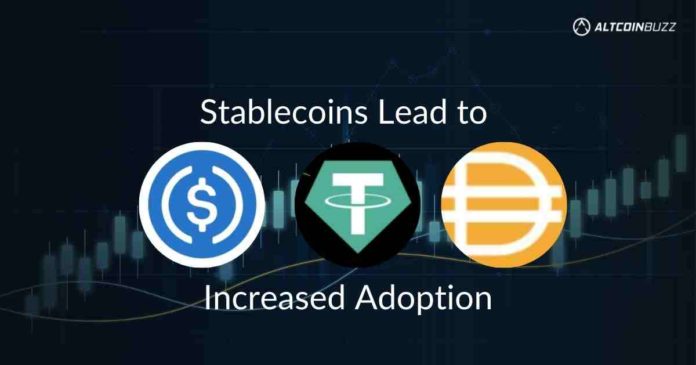Stablecoins are widely considered one of the biggest inventions in the blockchain world. Undoubtedly, the influence of these coins on crypto users has been phenomenal. For several reasons, stablecoins are the bridge connecting the crypto industry to the real world.
Over the last few months, the U.S. Securities and Exchange Commission has sought ways to enforce regulations on the crypto market. However, many people believe that these regulations are mostly aimed at stablecoins, which are directly pegged to the dollar. The SEC wouldn’t waste a moment pondering over stablecoins if they didn’t consider them important.
Last year, Jerome Powell, chair of the Federal Reserve, voiced his concerns over the growing popularity of stablecoins around the globe. In response to stablecoins’ fame, nations around the world began conversations about exploring a central bank digital currency (CBDC). The attention given to these digital assets proves that they are a huge part of the modern-day financial sector.
Explaining Stablecoins
A stablecoin is a digital asset with the goal of maintaining a similar value to a stable asset. The US dollar remains the most popular asset. These coins are designed to incorporate the technological abilities of digital assets while also offering a solution to the price fluctuations that have traditionally characterized major cryptocurrencies such as Ethereum and Bitcoin.
This way, people can enjoy the full benefits of blockchain, including smart contracts, while retaining a consistent price. There are primarily four types of stablecoins:
- Algorithmic: These are stablecoins that are not backed by crypto or fiat. However, they control the price stability and token supply with specialized algorithms and smart contracts.
- Crypto-backed: These coins receive backing from cryptocurrencies. So, a central authority does not issue them. However, they take place on-chain and use smart contracts.
- Fiat-backed: Native currencies such as the US dollar back these types of stablecoins. Furthermore, in order to issue a specific number of crypto tokens, the issuer needs to provide collateral in the form of dollar reserves in the same amount.
- Commodity-backed: Stablecoin issuers maintain equivalent values of items such as real estate, rare metals, and oil. A user can redeem these coins for the physical asset if they choose to.
2/ Stablecoins are fundamentally a simple concept
A blockchain-based token whose value is pegged to another currency (typically the US dollar)
This results a superior form of fiat:
Programmable
Permissionless
Borderless
Low-cost
Fast settlement
Interoperable
Highly liquid— ChainLinkGod.eth (@ChainLinkGod) May 23, 2022
Stablecoins to Trigger Global Adoption
According to statistics collected by The Block, the supply of stablecoins circulating on public blockchains totaled more than $180 billion by April 26. This was a 112% increase from $85 billion a year ago. Although the US dollar backs the vast bulk of stablecoins, crypto-backed and algorithmic stablecoin supplies have increased in the last year, from $9.6 billion to $34.09 billion.
This growth in demand mirrors how much people are flocking to stablecoins because of their store of value. With Bitcoin struggling to recover to its best, many traders believe stablecoins now offer more safety than any other token.
According to podcaster and community ambassador for Chainlink, ChainLinkGod, “stablecoins are the Trojan Horse that will bring smart contracts to the masses. Once you experience the benefits firsthand, there is simply no going back”
Stablecoin adoption is growing, which could help promote the use of cryptos as a means of exchange for everyday monetary operations and other uses. Stablecoins have huge potential. People can use them to engage in commerce over blockchain networks and different platforms. These digital coins can usher in a new wave of crypto adoption.
11/ Regardless of what the uncertain future of stablecoins will look like, one thing is true
Stablecoins are the Trojan Horse that will bring smart contracts to the masses
Once you experience the benefits firsthand, there is simply no going back
— ChainLinkGod.eth (@ChainLinkGod) May 23, 2022
The Chainlink ambassador believes that stablecoin adoption will begin on the institutional front. He wrote, “ A large part of this shift towards stablecoin usage will happen on the institutional front. First for internal operations, then for external operations. The ability to transmit dollars between institutions becomes frictionless and orders of magnitude faster and cheaper”
What Does the Future Look Like?
In a thread posted on Twitter, he continues with a scenario where stablecoins would have gained global adoption due to soaring demand. Furthermore, stablecoins could help trigger a society where value flows freely between individuals without current restrictions.
24/ Ultimately, the end-result is a more trust-minimized society where people can exchange value freely
Crypto as a whole isn’t quite mainstream ready, but stablecoins are the most clear use-case that already meets real-world user demand today
— ChainLinkGod.eth (@ChainLinkGod) May 23, 2022
As more institutions adopt these coins, others will move to do the same. However, this massive adoption would also show the need and importance of smart contracts. Current paper-based agreements will be phased out in favor of deterministic smart contracts. The end result would make value flow completely frictionless.
There is a possibility that merchants around the world could adopt stablecoins due to their growing popularity. Visa will undoubtedly spring into action when the time comes. This way, Stablecoins will slip into the global economy alongside smart contracts. Platforms such as Chainlink would come in handy at this point. Chainlink is one of the leading oracles in the crypto space. As a result, it has a part to play when stablecoins reach global acceptance.
In conclusion, the crypto space is still figuring things out. However, stablecoins appear to have the potential to raise more awareness as they have real-world use.
And for our best, freshest research on NFT buys, Layer 1 chains, DeFi, or games, come check out Altcoin Buzz Access. Plans start at only $99 per month
For more information on cryptocurrency, visit the Altcoin Buzz YouTube channel.




























